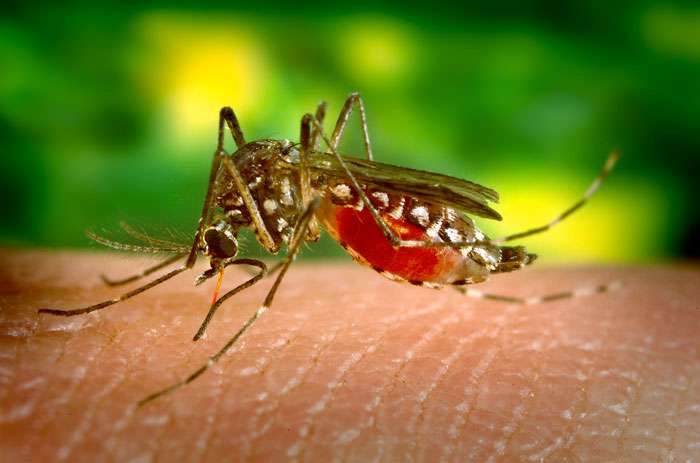
Yellow fever is a viral disease causing widespread epidemics in Africa and the Americas. It can be recognized in historical documents dating back 400 years.
yellow fever agent
The disease is due to yellow fever virusor yellow fever virus, which belongs to the group of flavivirus. In Africa, there are two distinct genetic types (topotypes) in East Africa and West Africa. South America also has two different types, but since 1974 only one of them has been identified as the cause of an epidemic.
The virus is transmitted to humans by a vector, mosquitoes belonging to the genres Aedes, Haemagogus and Sabethes.
Yellow fever symptoms
Clinical manifestations of infection can range from symptoms mild to serious life-threatening illness. The qualifier “yellow” is explained by jaundice (” jaundice ”) which is observed in some patients.
The virus remains silent for an incubation period of three to six days. The disease then progresses in two phases. Although some cases have no symptoms, the first or “acute” phase is normally characterized by fever, pains muscles (especially dorsal), headaches, chills, anorexia, nausea and vomiting. Often, high fever is paradoxically associated with a slow pulse. After three to four days, most patients see their condition improve, with disappearance of symptoms.
In 15% of them, however, the disease then enters a “toxic” phase within 24 hours. The fever reappears and several systems are affected. The patient quickly becomes jaundiced and suffers from abdominal pain accompanied by vomiting. Bleeding may occur in the mouth, noseof the eyes and of thestomach. At this stage, blood is found in vomit and stool. Renal function deteriorates, ranging from proteinuria (albuminuria) to renal failure complete with anuria. Half of patients in the toxic phase die after ten to fourteen days. The others heal without sequels notable organics.
Diagnosis of yellow fever
Yellow fever is difficult to recognize, especially in the early stages. It can easily be confused with the malariathe typhoid feverrickettsioses, viral hemorrhagic fevers (such as Lassa fever), arboviruses (such as dengue fever), leptospirosis,hepatitis virus or intoxication (for example by tetrachloride of carbon). Laboratory tests are needed to confirm suspected cases. Serology can detect antibody produced in response to yellow fever virus infection. Several other techniques are used to identify the virus itself in blood samples. blood or in liver tissue collected after death. These tests require highly trained laboratory personnel and specialized equipment and supplies.
Yellow fever treatment
There is no specific treatment for yellow fever, but the symptoms can be treated.
Although we have a vaccine effective, the number of people infected has increased over the past 20 years and yellow fever is once again a serious public health problem.
You will also be interested
Interested in what you just read?
